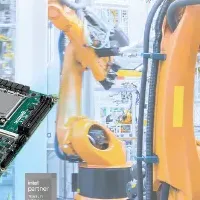
Automated Passenger Counting System Market Set to Surge to $14.80 Billion by 2030
Introduction
The automated passenger counting and information system (APCIS) market is on the rise, with estimates suggesting it will escalate from USD 9.70 billion in 2025 to a remarkable USD 14.80 billion by 2030. This growth projected at an impressive CAGR of 8.8% between 2025 and 2030, reflects a growing trend in the transportation sector aimed at optimizing operational costs and enhancing passenger experiences.
Market Dynamics
The impetus behind this exciting growth can be traced back to heightened competition among transit operators. These players are continuously seeking ways to provide cost-effective and reliable transportation services that stand out in an increasingly saturated market. While implementing advanced technologies can demand substantial up-front investment, they ultimately pave the way for improved efficiency and profitability by minimizing operational costs. Transit authorities are leveraging historical passenger data to fine-tune vehicle scheduling and routing, thereby optimizing resource utilization and reducing the frequency of empty trips.
Key Trends and Drivers
1. Emphasis on Operational Efficiency: The constant struggle to minimize operation costs propels the adoption of automated systems in transport networks. With accurate passenger counting mechanisms, transit operators can significantly boost service reliability by ensuring the appropriate number of vehicles are deployed on high-demand routes.
2. Intelligent Transportation Solutions: Transit agencies are increasingly turning towards intelligent transportation systems (ITS), which include technologies like passenger information systems and telematics. These innovations not only enhance operational efficiency but also offer passengers timely and relevant information, contributing to an improved travel experience.
3. Growing Urban Transit Infrastructure: As cities evolve with smart initiatives, substantial investments are directed towards enhancing public transport systems. Infrastructure-based solutions such as overhead infrared sensors and advanced camera technology are being deployed at stations to capture real-time passenger data. These innovations help in effective crowd management and service planning, further leading to enhanced operational flexibility.
Future Growth Areas
The rail transport segment particularly holds promise, expected to constitute a significant share of the passenger information system market by 2025. This is largely driven by a focus on improving commuter satisfaction and operational effectiveness within both urban and intercity rail systems. The growing integration of technologies such as AI, GPS, and cloud computing into real-time information systems positions the railway sector as a front-runner in adopting advanced passenger information technologies.
The Asia-Pacific region stands out as the area anticipated to exhibit the highest growth rate in the APCIS market from 2025 to 2030. Influences contributing to this region's expansion include rapid urbanization, enhanced public transportation networks, and smart city endeavors. Governments are increasingly investing in intelligent transit solutions driven by rising commuter expectations and population densities.
Key Players in the Market
Prominent players contributing to the growth of the APCIS market include:
- - Eurotech S.p.A. (Italy)
- - iris-GmbH (Germany)
- - Siemens (Germany)
- - Hitachi, Ltd. (Japan)
- - Cisco Systems, Inc. (USA)
- - Clever Devices Ltd. (USA)
Conclusion
With a landscape marked by continual advancement in technology and increasing emphasis on passenger satisfaction, the automated passenger counting and information system market is poised for robust growth. As transit agencies adapt to the changing dynamics of the transportation sector, the demand for effective, reliable, and intelligent counting systems stands as a pivotal factor. Companies that embrace these developments will likely find themselves at the forefront of the transport revolution, ready to capitalize on the new opportunities that arise.
Topics Consumer Technology)










【About Using Articles】
You can freely use the title and article content by linking to the page where the article is posted.
※ Images cannot be used.
【About Links】
Links are free to use.